Our current reach in the Far East, ten months into the war with the USSR.
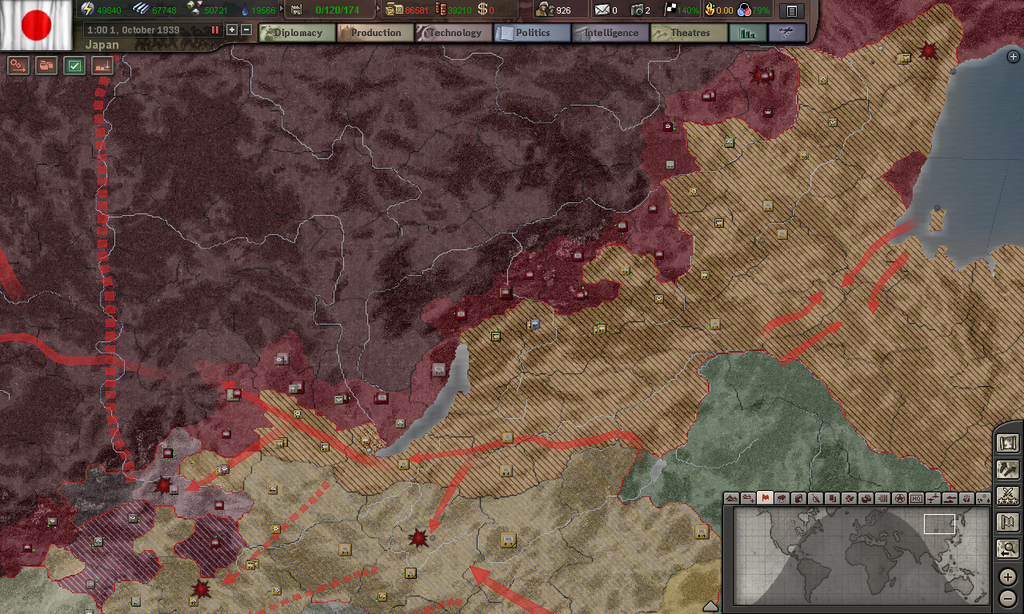
Danger!
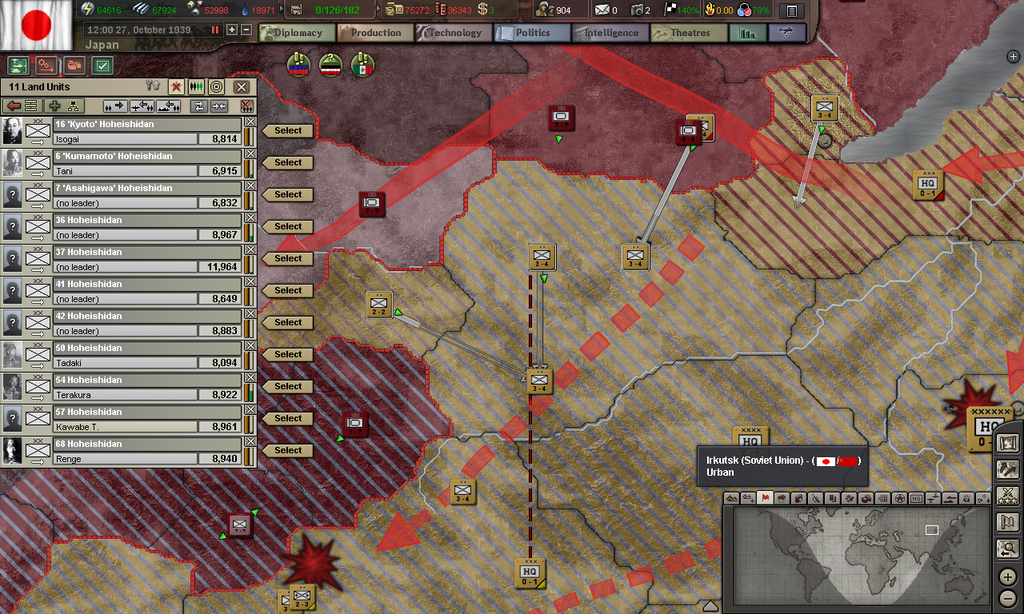
Soviet troops charging up a hill in Mongolia.
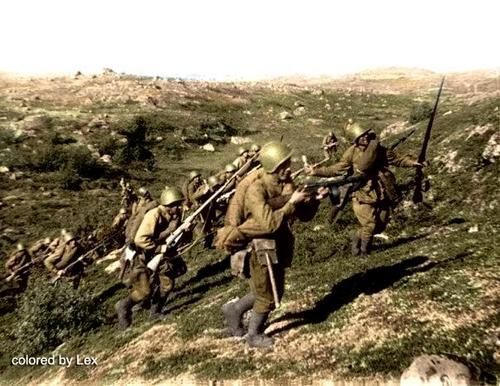
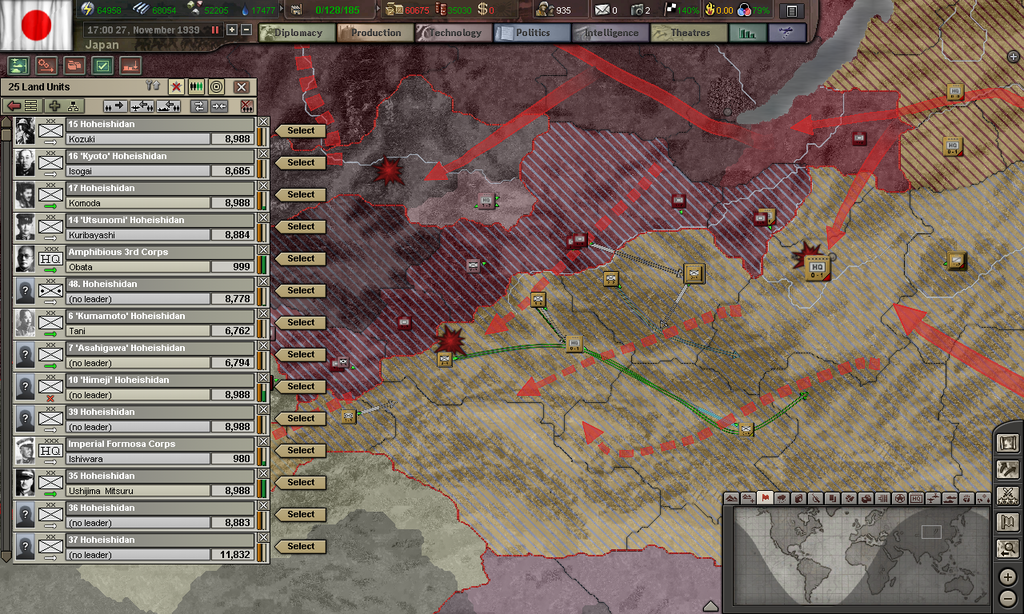
Daring Soviet assault teams getting up close and disabling our tanks.
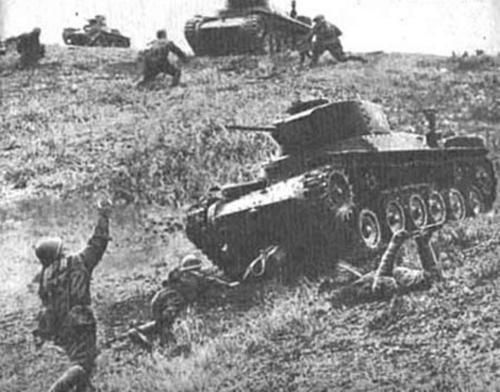
By the end of December, our troops kept on falling back across the steppes of Mongolia. We have ceded about half of the country to the Soviet winter offensive.
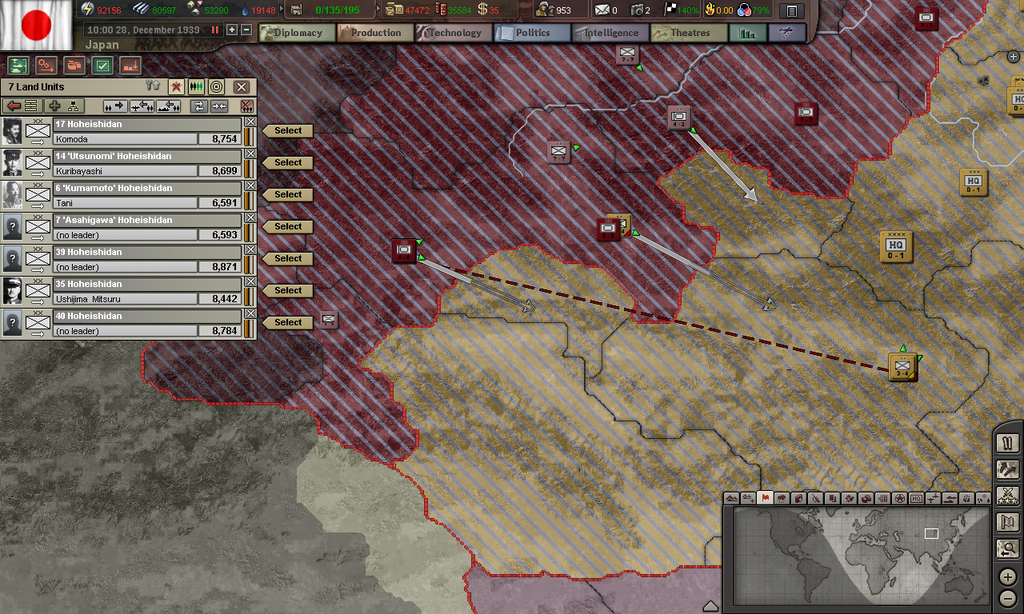
A Soviet tank batallion around a wooded area, perfect for cover.
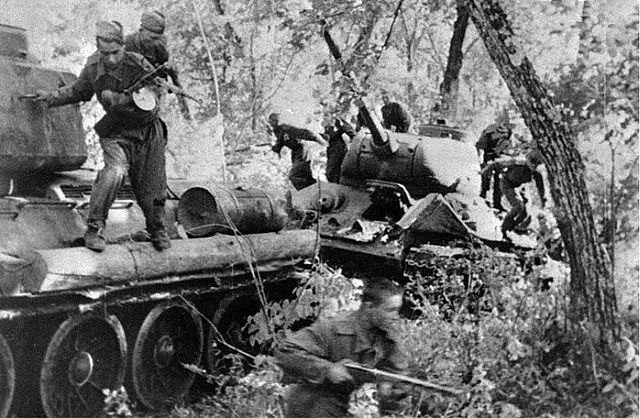
The importance of Ulaanbaatar for High Command is revealed by their willingness to send the entire air force to help the troops defending the mongolian capital.
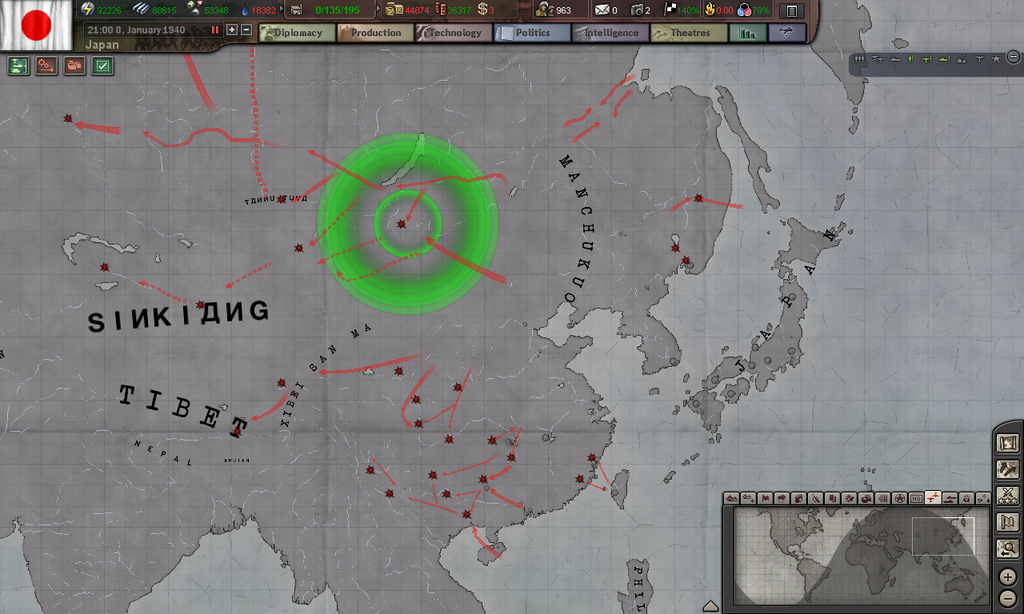
The Critical Zone 1st Corps, an infantry column, shall be sent to Mongolia to help the worn out troops there because it seems they might collapse soon if reinforcements are not sent.
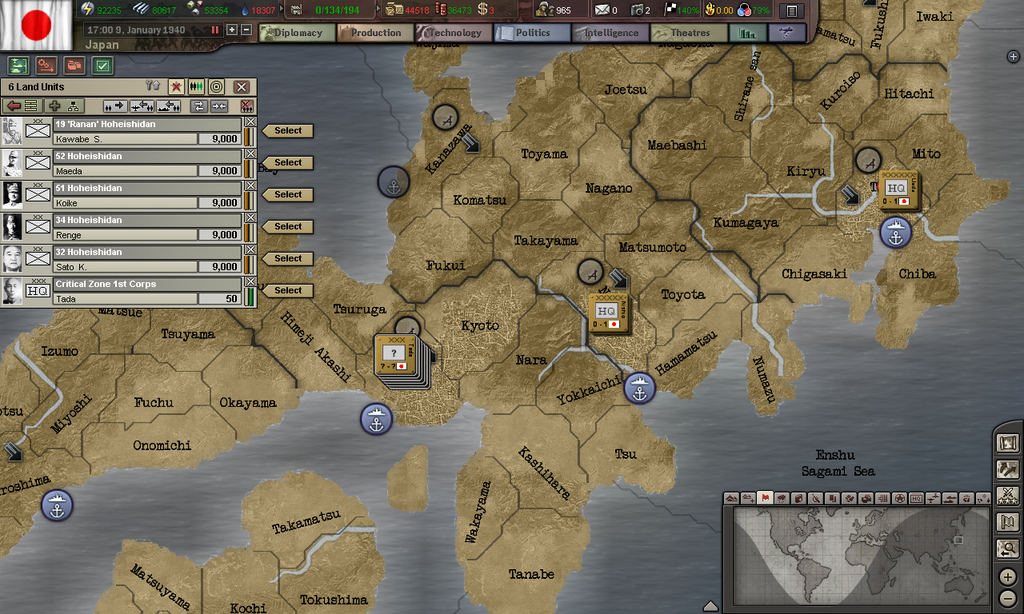
DISASTER!
To our terror, the Imperial Army of Manchuria has lost about 45,000 troops in this three month long Soviet offensive. The Imperial Army of Outer China has lost...130,000 soldiers out of 200,000!!! All in all, about a third of our initial forces in Russia have been wiped out in a single campaign by the USSR!
This is an national crisis! Most ministers have been forced to resign and the entire Army Chief of Staff of the Imperial General Headquarters has been replaced. The commander of Imperial Headquarters Russia has commited seppuku to regain his honor. The home press has reported the defeat and the population went hysterical. Many Imperial and governmental ediffices have been ransacked and burned. There was widespread rioting and looting in central Tokyo and the police have arrested about five thousand protesters, mostly young adults, elderly veterans and even women. Many suicides were also reported in the news, as some fanatics could not resist the shame of national defeat.
Imperial Officers interrogated after being captured by the Soviets.
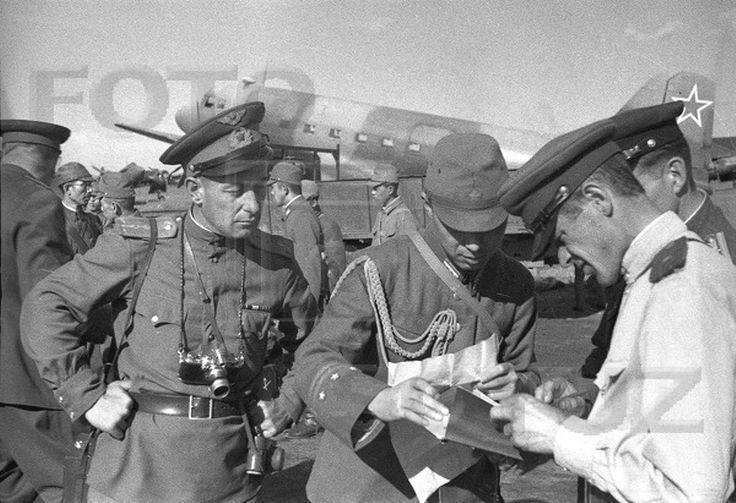
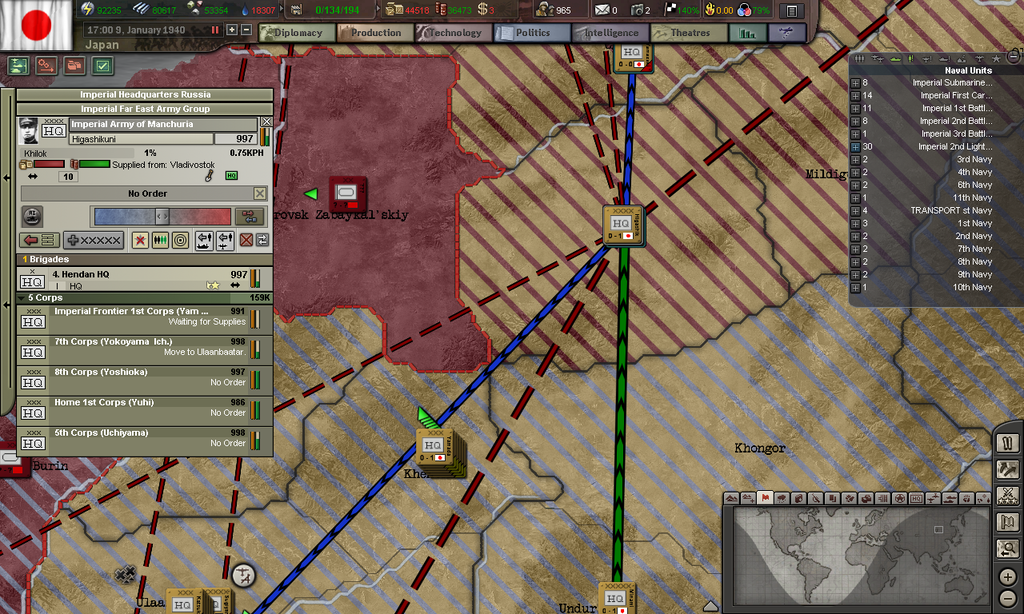
The Home 1st Corps returning from defeat with only two out of its five original divisions.
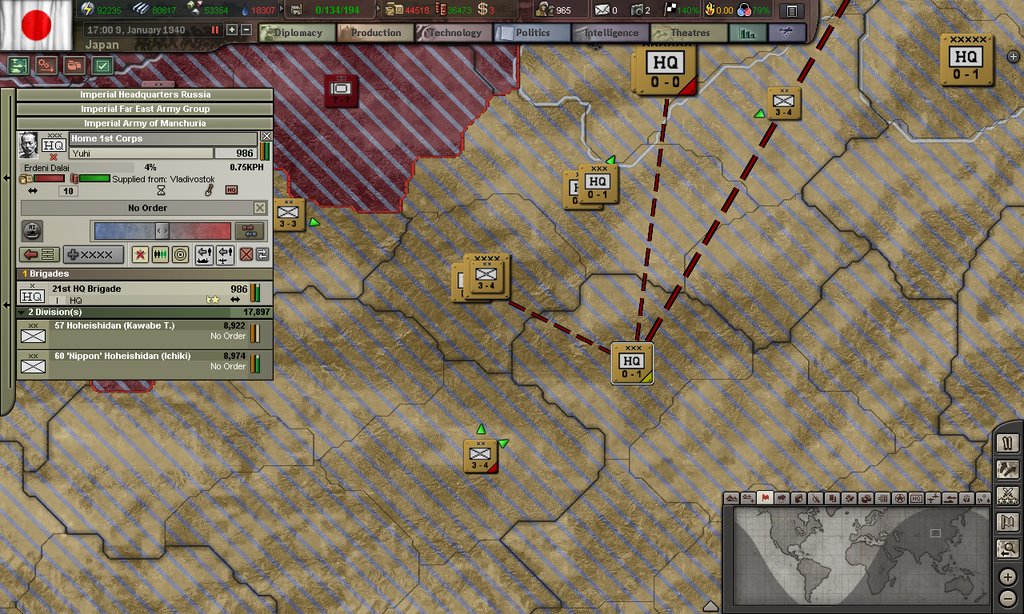
The Amphibious 3rd Corps has lost 4 out of 5 divisions. A real problem has surfaced in this theatre.
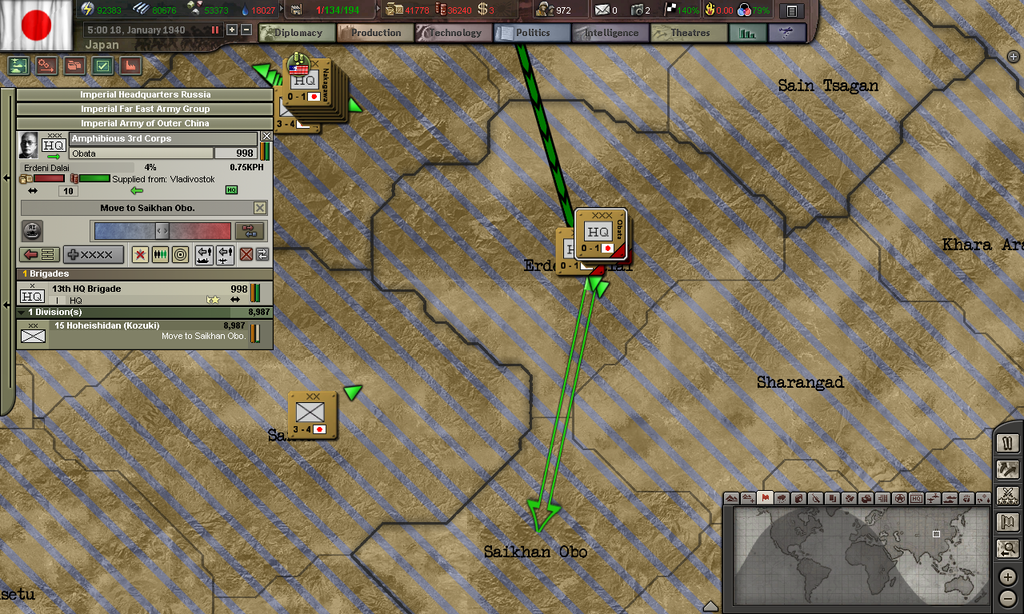
Soviet soldiers are photographed marching through Mongolia. We are shocked that these conscripts have been pushing us back. Its their firepower, not them.
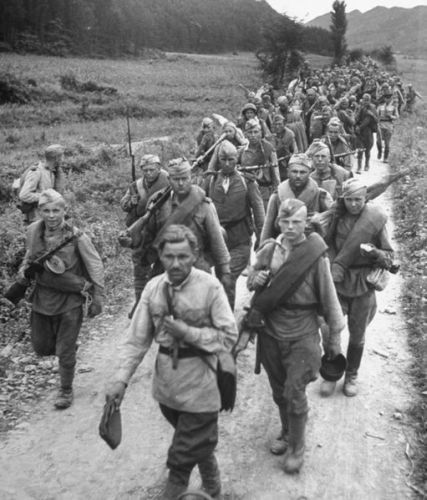
Far East Army Group was made up of 400,000 troops when the invasion of Russia started. Today, its strength is about half of that. In total, out of approximately 600,000 troops sent to Russia, only about 400,000 are left today, the other 1/3 was wiped out in the Soviet winter offensive of 1939.
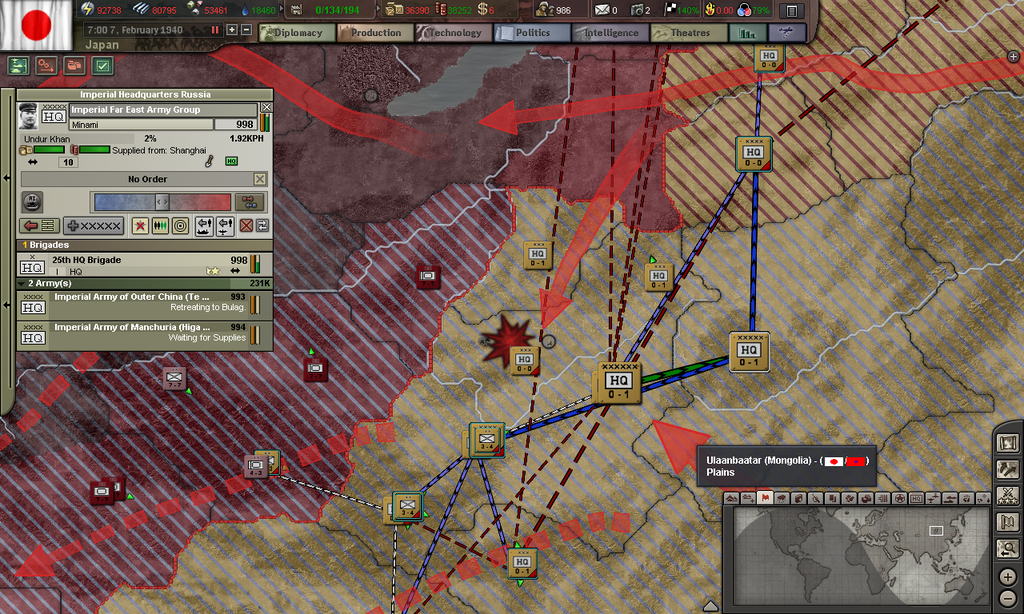
Shame of defeat! Our troops are seen surrendering their flags and Imperial banners to the victorious Red Army. Stalin must be satisfied.

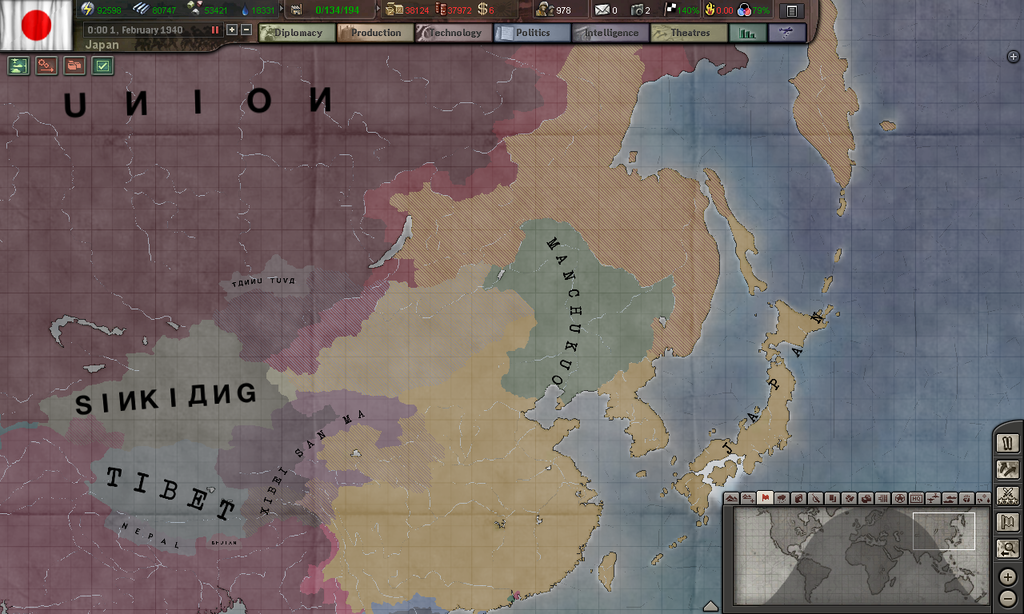
Our biggest mistake though, has been the inmense resources we have given to the Navy instead of the Army since 1938. By 1936, our land forces were about 500,000 strong. Three years later, on the eve of the Soviet invasion, this had grown to about 1 million troops, of which only 40,000 were anti-armor troops. For comparison, one (1) Super Heavy Battleship and nine (9) Aircraft Carriers and their respective CAGs (18?) are being built for the Navy. We knew a conflict with the USSR would be a land war by default. However, we felt very confident in the size and strength of our Army because they had come from an spectacular and lightning victory in China. This is the reason why we only gave the Army few production slots and just sent 600.000 soldiers to Russia and left 400,000 in China.
The reality on the ground in Russia was very different though. Soviet troops were highly motivated, organized and well armed. Their tanks had a devastating effect on our forces and the size and strength of the Red air force was also impressive. The size of the territory was inmense and the weather was harsh too, this had a massive psychological effect on the soldiers as it made them feel small and powerless. We could feel that the lands of Russia were basically swallowing division after division. To make matters worse, the poor infrastructure in the Far East broke our supply lines many times and some divisions were living on the day.
All of this won't stop our advance though. We will regroup our forces and hold the lines. We shall build five anti-tank corps, a few tactical bombers and air bases. Once the veteran and fanatical Armies of China reach Mongolia, we shall continue the offensive.
Until next time! In the next update, our war will be focused exclusively on Russia and shall include a small Field Marshall and Admiral ceremony for the commanders who have done well in conflict. We will also start to formulate strategic plans of war against the Allies and Americans.
Soviet-Japanese Border Wars (1932-1941)
The Soviet–Japanese border wars was a series of combats and skirmishes around Manchuria and Mongolia, without any formal declaration of war, between the Soviet Union and the Empire of Japan between 1932 and 1941. The Imperial Japanese army recorded 151 minor incidents on the border of Manchuria between 1932 and 1934. The number of incidents increased to over 150 per year in 1935 and 1936, and the scale of incidents became larger. About 100,000 casualties were the result of the conflict.
This political doctrine of the Empire of Japan was called Hokushin-ron and stated that Manchuria and Siberia were Japan's sphere of interest and that the potential value to Japan for economic and territorial expansion in those areas was greater than elsewhere. Its supporters were called the Strike North Group. It enjoyed wide support within the Imperial Army during the interwar years, but was abandoned in 1939 after military defeat on the Mongolian front at the Battle of Khalkhin gol. It was superseded by the diametrically-opposite rival policy, the "Southern Expansion Doctrine" (Nanshin-ron or Southern Road), which regarded Southeast Asia and the Pacific Islands as Japan's political end economic sphere of influence and aimed to acquire the resources of European colonies while neutralising the threat of Western military forces in the Pacific.
This political doctrine of the Empire of Japan was called Hokushin-ron and stated that Manchuria and Siberia were Japan's sphere of interest and that the potential value to Japan for economic and territorial expansion in those areas was greater than elsewhere. Its supporters were called the Strike North Group. It enjoyed wide support within the Imperial Army during the interwar years, but was abandoned in 1939 after military defeat on the Mongolian front at the Battle of Khalkhin gol. It was superseded by the diametrically-opposite rival policy, the "Southern Expansion Doctrine" (Nanshin-ron or Southern Road), which regarded Southeast Asia and the Pacific Islands as Japan's political end economic sphere of influence and aimed to acquire the resources of European colonies while neutralising the threat of Western military forces in the Pacific.

In 1939, Soviet and Imperial forces clashed in what would be called the Battle of Khalkhin Gol. The fighting lasted from May to September of 1939. An up and coming Soviet general named Zhukov was responsible for a combined arms assault involving around 600 fighters and bombers and 500 tanks in the last week of August. The offensive was devastating for the Japanese troops and they were destroyed. After this victory, the Soviets signed the Molotov-Ribentropp Pact on the 24th of August.The Japanese and the soviets signed a cease fire on the 15th of September. With the threat of a second front in the Far East gone, the Soviets concentrated in Europe and invaded Poland on the 17th of September. In 1941, they signed a non-aggression pact.
BONUS video from the defeat of our forces in Mongolia by the USSR:
Last edited:
- 1


